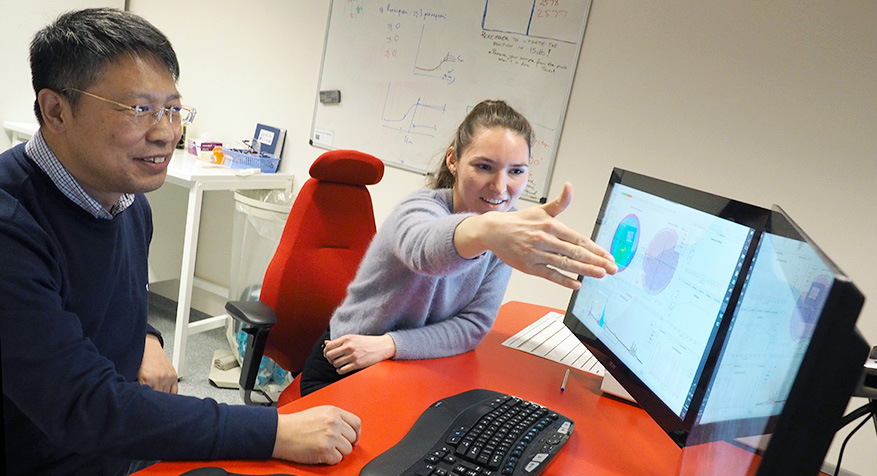Research - Department of Materials Science and Engineering
Physical Metallurgy

Physical metallurgy is a field of study within metallurgy where the focus is on the physical properties and structure of metals and alloys. It is important to know the effect of for instance the chemical composition, heat treatment and production process on the final component in order to achieve components with optimal properties. This field of expertise comprise all the steps from solidification to final product.

The physical metallurgy group at NTNU has wide international contacts and collaboration with similar groups around the globe. This network includes some of the most cited persons in the world within Materials Science. In our group we are especially focusing on the following topics:
Casting and Solidification
The focus of the Casting and Solidification group is on fundamentals of solidification, defects formation and microstructure of silicon, aluminium and other light metals.
Advanced Characterization
- of microstructure and mechanical properties
Characterization of the microstructure in metals is key in physical metallurgy, as the microstructure is strongly connected to the metals’ physical properties. There are several different techniques that can be used to study the microstructure such as optical microscopy, scanning electron microscopy and transmission electron microscopy. Together with the Department of Geoscience and Petroleum, the Department of Materials Science and Engineering is hosting the Norwegian Laboratory for Mineral and Materials Characterisation (MiMaC) - a national laboratory infrastructure.
NanoSPD
The NanoSPD group carries out research using severe plastic deformation (SPD), where the nano structuring is studied in metallic materials. Techniques such as Equal Channel Angular Pressing (ECAP, i.e. with back-pressure), High Pressure Torsion (HPT), Medium Pressure Torsion for larger specimens and Accumulated Roll Bonding (ARB) are available in the laboratory.
Joining of similar and dissimilar metals
Joining of small parts into larger components is a manufacturing technique that has been used for many hundred years. Today, there are several different joining techniques used to join both similar and dissimilar metals where to goal is to achieve optimal properties in the joints and in the joined metals.
SFI PhysMet

![]() Follow us on Facebook for latest news
Follow us on Facebook for latest news
Academic staff
-
Trond Furu
+4790590343 trond.furu@hydro.com Department of Materials Science and Engineering -
Jarle Hjelen Professor Emeritus
+47-73594895 +4792035700 jarle.hjelen@ntnu.no -
Bjørn Holmedal Professor
+47-73594904 +4790084946 bjorn.holmedal@ntnu.no Department of Materials Science and Engineering -
Morten Karlsen
mortenka@equinor.com Department of Materials Science and Engineering -
Paraskevas Kontis Associate Professor
paraskevas.kontis@ntnu.no Department of Materials Science and Engineering -
Yanjun Li Professor
+47-73551206 +4798283973 yanjun.li@ntnu.no Department of Materials Science and Engineering -
Tomas Manik Associate Professor
tomas.manik@ntnu.no Department of Materials Science and Engineering -
Knut Marthinsen Professor
+47-73593473 knut.marthinsen@ntnu.no Department of Materials Science and Engineering -
Marisa Di Sabatino Professor
+47-73551205 +4798243462 marisa.di.sabatino@ntnu.no Department of Materials Science and Engineering -
Jens Christofer Werenskiold Associate Professor
+4799297837 jens.c.werenskiold@ntnu.no Department of Materials Science and Engineering
Professor Emeriti
-
Lars Arnberg Professor Emeritus
+46 70 424 2548 arnberg@ntnu.no Department of Materials Science and Engineering -
Jarle Hjelen Professor Emeritus
+47-73594895 +4792035700 jarle.hjelen@ntnu.no -
Otto Lohne Professor Emeritus
otto.lohne@ntnu.no -
Jan Ketil Solberg Professor Emeritus
+47-73592051 jan.ketil.solberg@ntnu.no
